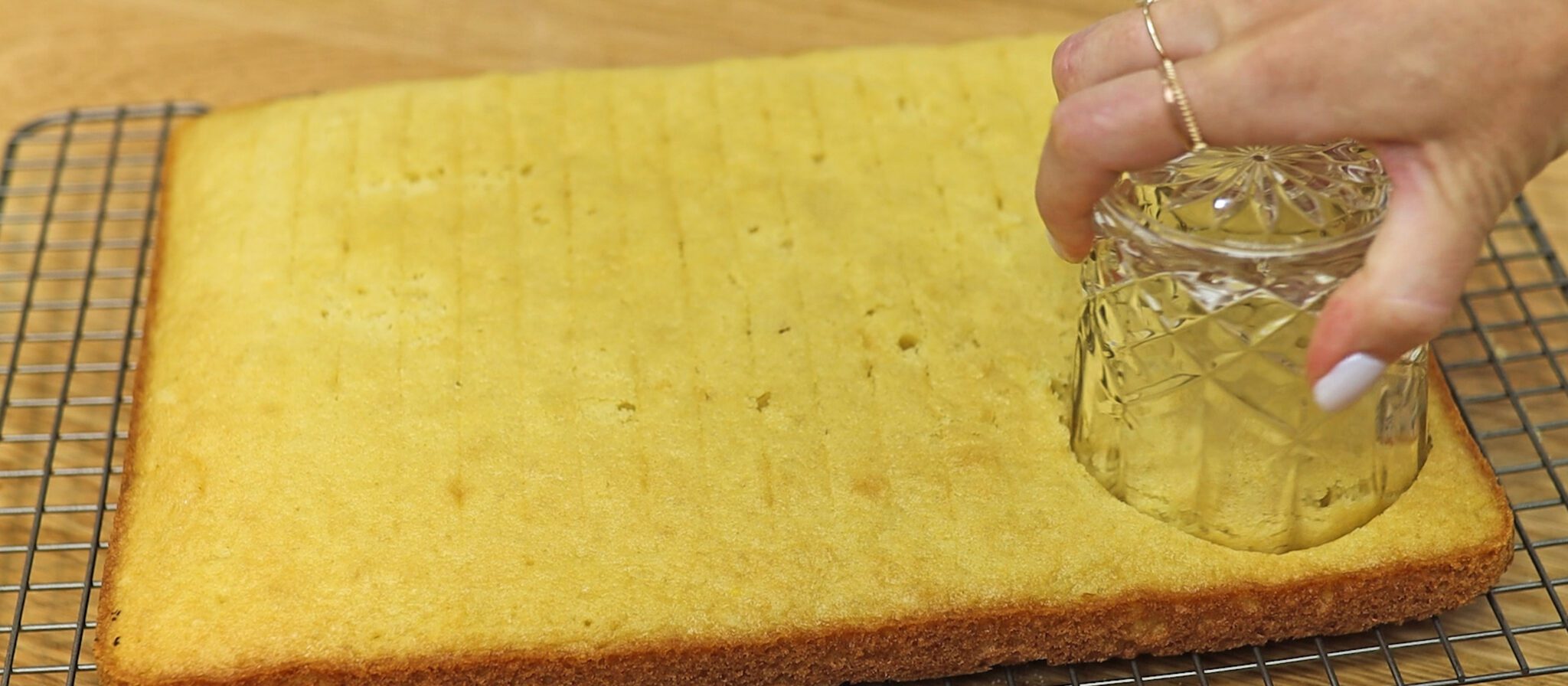
A sheet pan is a rectangular pan and of course, you can use it to make a rectangular cake but you can also do so much more with it! In this tutorial I’ll show you 6 ways to use your sheet pan to make different shaped cakes!
One of the quickest cakes to make is a tray bake. After baking a sheet cake, let it cool in the pan and then spoon your frosting on top. Spread it around while the cake is still in the pan. This way you don't have to worry about frosting the sides of the cake! You also don't need a cake board or platter big enough to put the cake on.
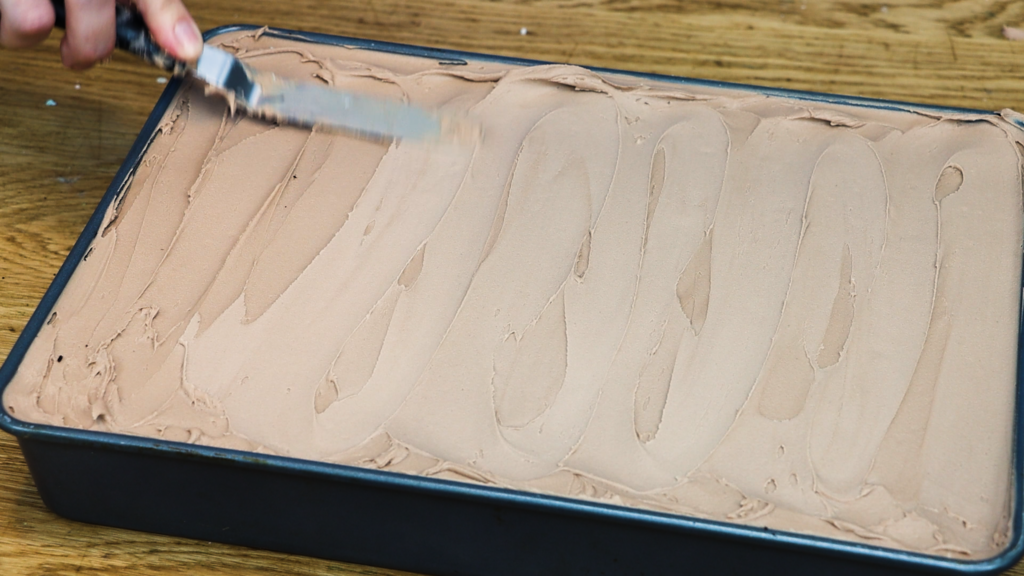
Wiggle your spatula back and forth to add some texture or scrape from side to side to smooth the frosting. Then decorate it with sprinkles or piping or a buttercream transfer or whatever you like.
Make mini cakes using a sheet cake by using a round cookie cutter to cut out circular cake layers. This is perfect if you don't have lots of small cake pans. Even if you do, cutting the cake layers out of a sheet cake is much quicker than baking a few layers at a time and you won't have to wash lots of cake pans this way.
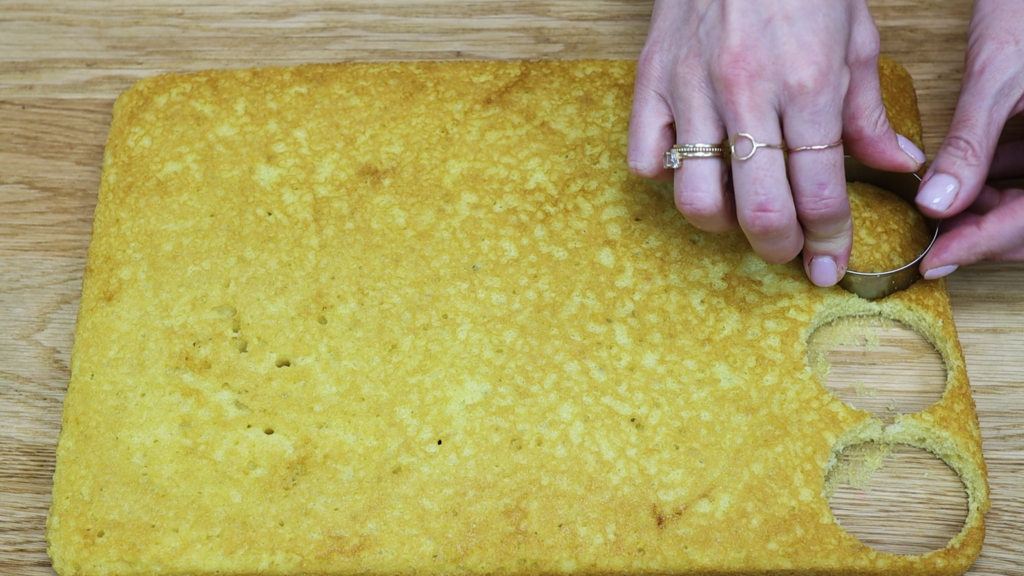
If you don't have a round cookie cutter you can use the rim of a glass instead. Although the edges won't be as neat, the frosting will cover them up soon!
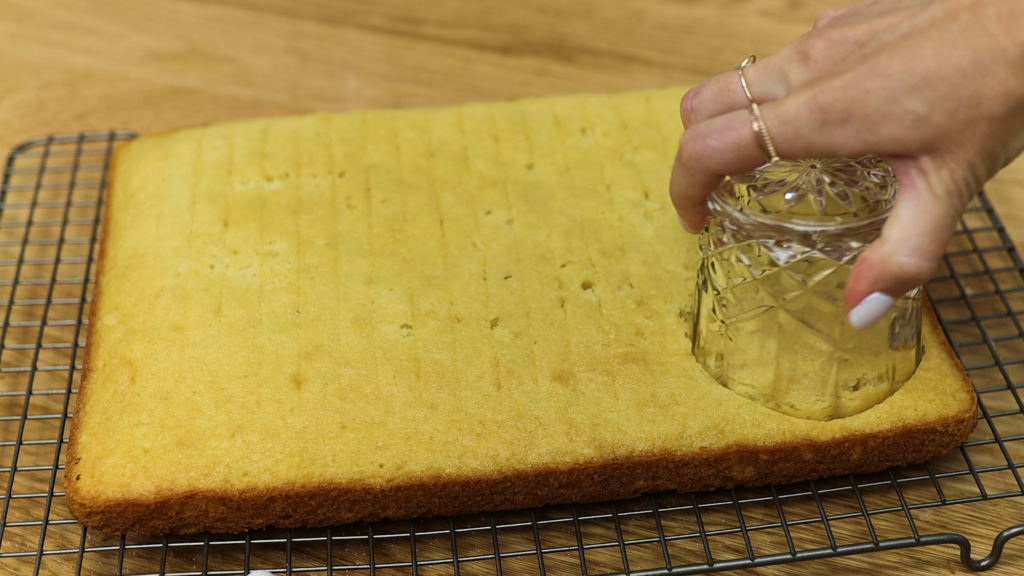
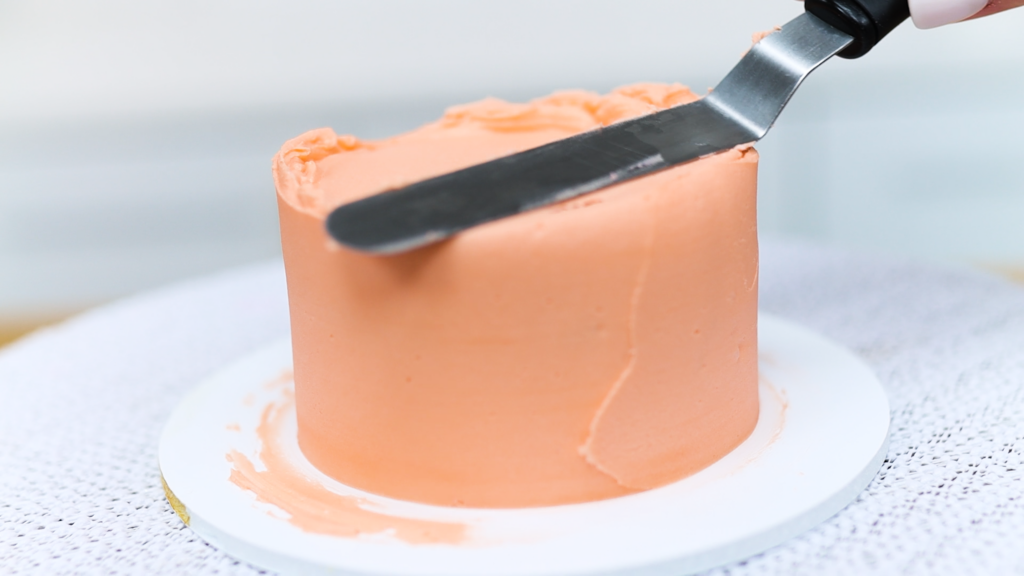
These mini cakes can be turned into lunchbox cakes to take to school or work. Share them with a loved one for a small celebration or just because!
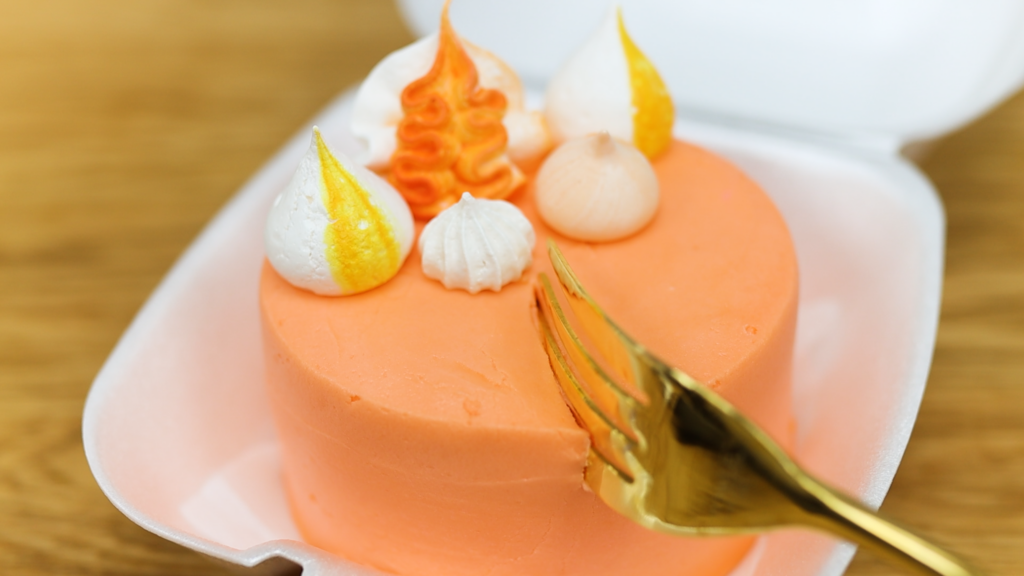
Number cakes can be cut out of sheet cakes instead of buying special pans for each individual number. Cut a piece of paper the same size as the cake. To make a single layer cake, draw your number onto that piece of paper. For two layers, fold the paper in half and then draw the number onto it. Cut it out and place it on the cake to cut around.
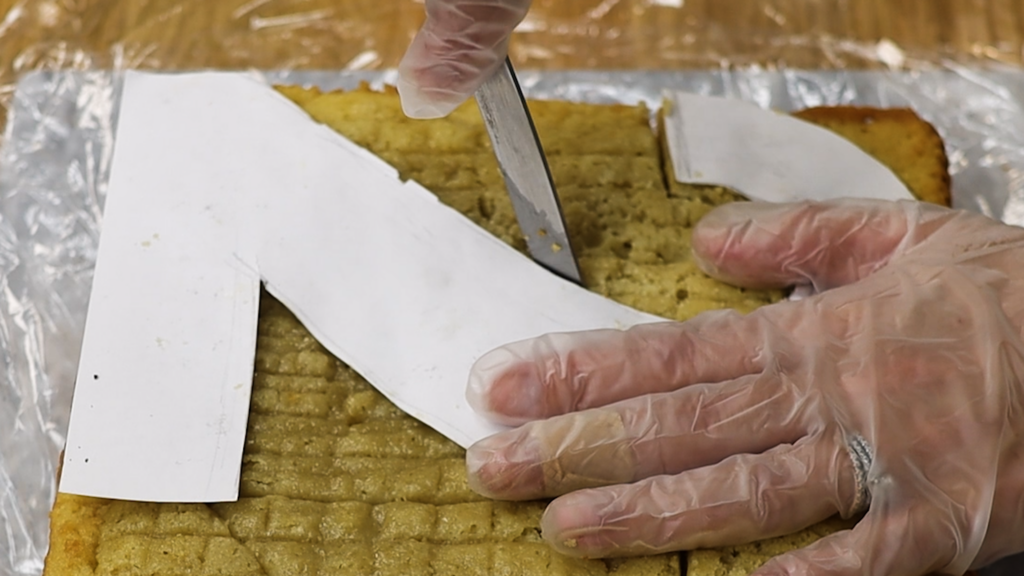
I like to use two layers for piping in the middle and also on top of the cake. I'm using a 1M star tip to pipe these rosettes.
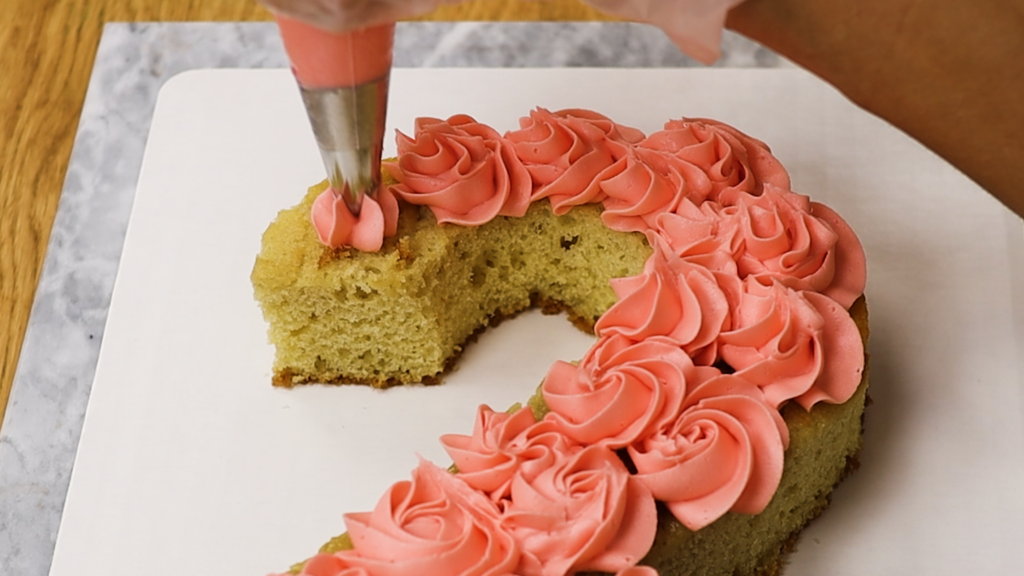
While the frosting is still soft and sticky you can add decorations on top and they'll attach easily.
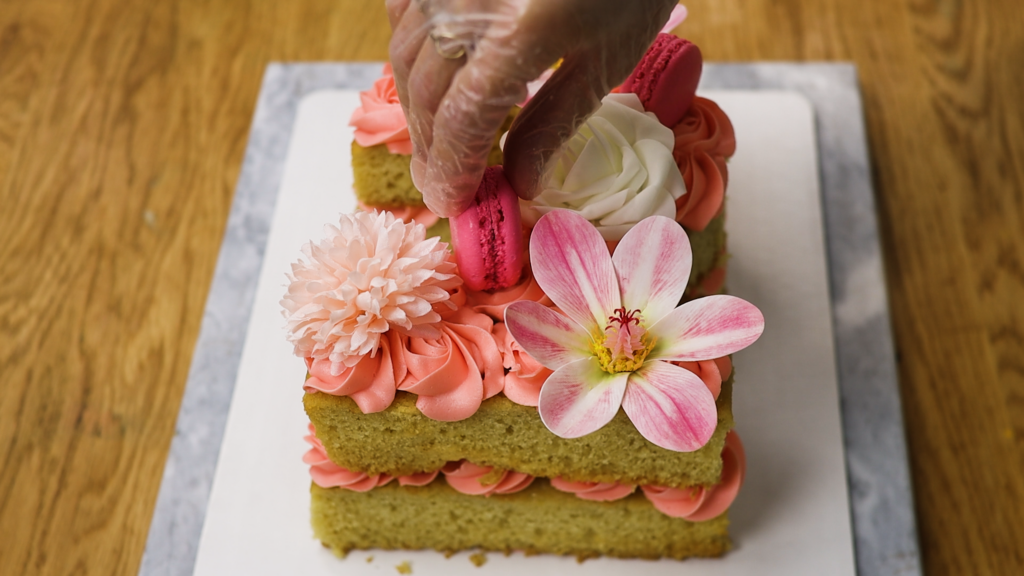
Number cakes are quick to make and don't need smooth frosted sides, which is great if you struggle with that! They do dry out quickly though, because there's no frosting to seal in the moisture around the sides. Because of this I don't make these more than a day in advance. Store them in an airtight container like a tupperware or in a cake box with a lid. See my tutorial on 10 number cake hacks for more tips!
You can make round layer cakes out of sheet cakes using a cake ring. With a 6 inch cake ring you can get two circles out of a 9 by 13 inch sheet cake. You'll also get two semicircles as well as some cake scraps, which you'll need in a minute.
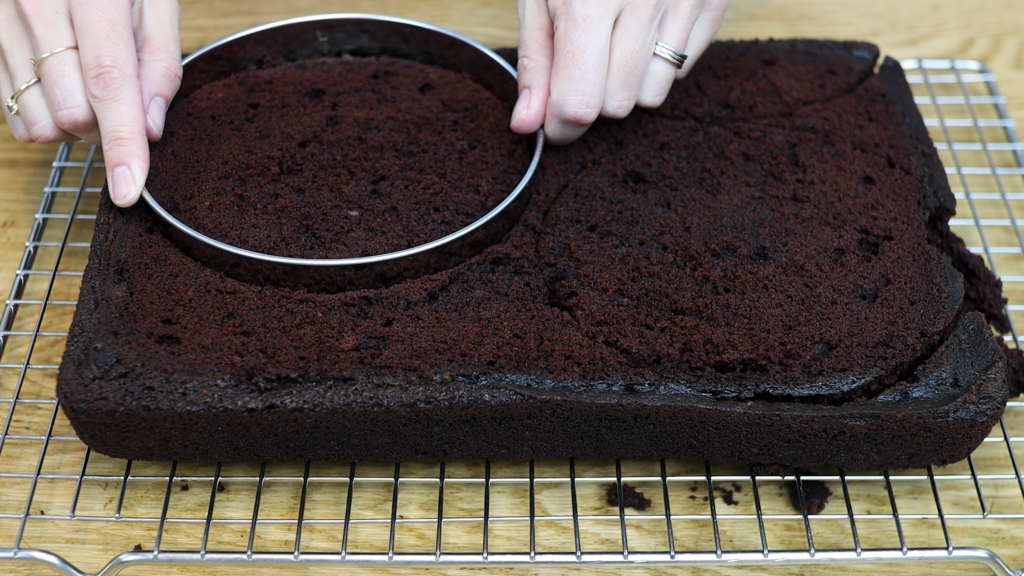
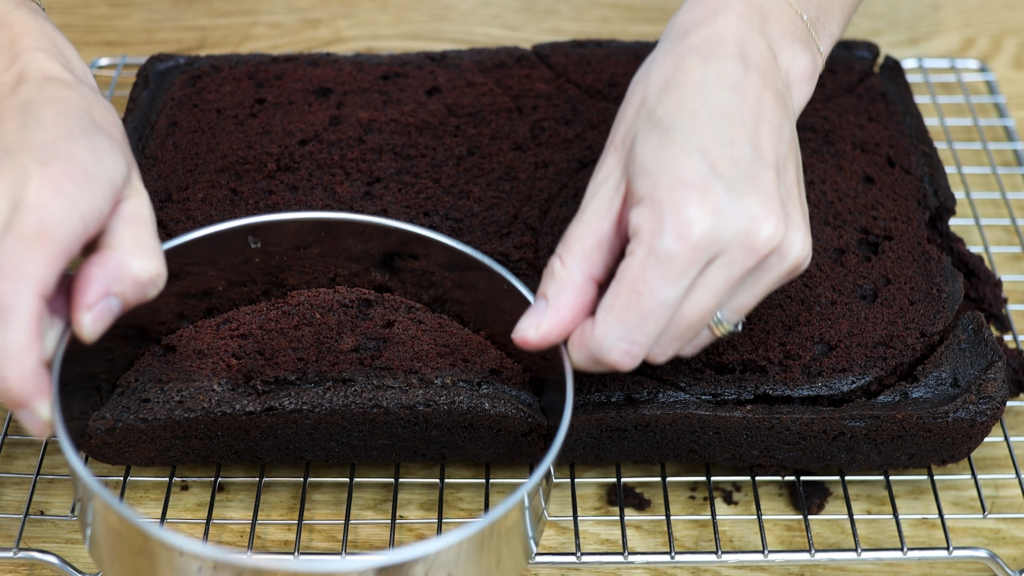
You can divide the cake layers in half if you like. Now alternate cake and filling to assemble your cake. I'm using room temperature cake layers which I almost never do and you can see why! When cakes are at room temperature they're really crumbly and messy to work with. Refrigerating them for an hour firms them up so that they hold together much better.
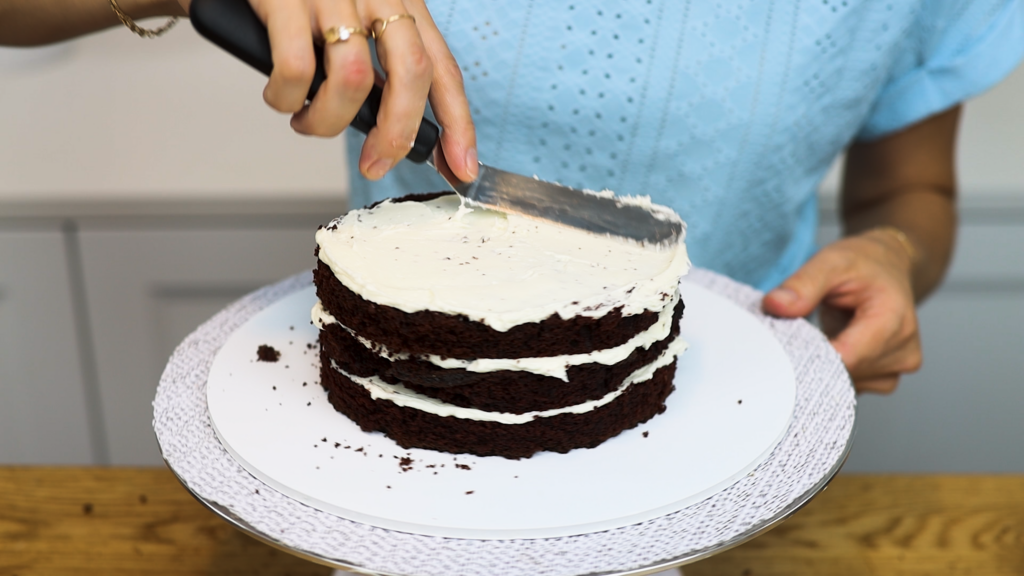
When you place the semicircle layers on the cake you'll see a big gap in between them. This is where the cake scraps come in, to fill the gap. Spread frosting along the straight edges of the semicircles to attach the scraps so that they stay in place.
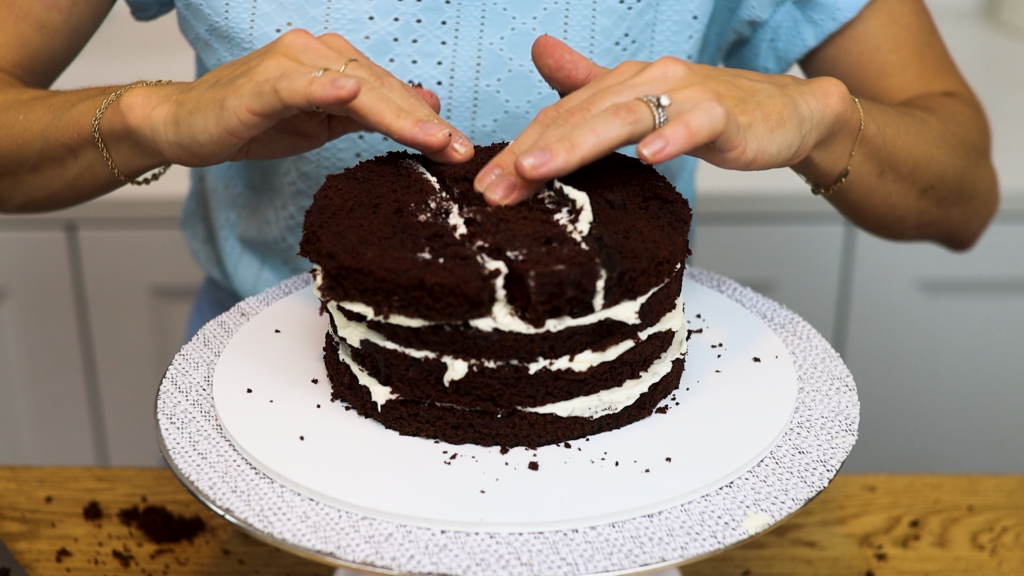
Add another layer of filling, another layer of cake, and tadaa! Frost and decorate this cake and when you slice into it and serve it the layers will look perfect.
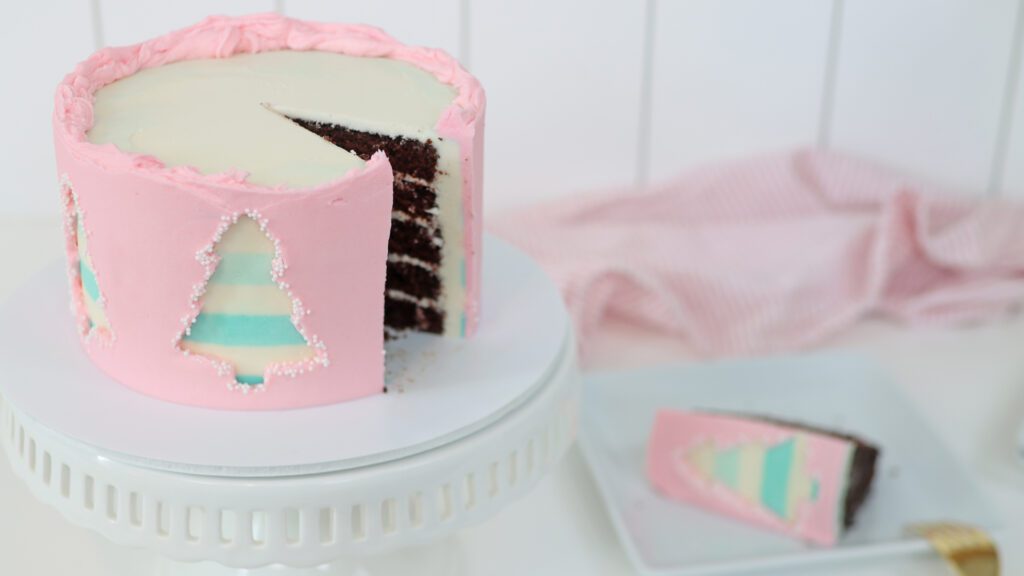
Cut your sheet cake into squares to make a square cake without needing a square cake pan. Alternate the cake layers with filling to assemble your cake. With a 9 by 13 inch cake you'll have four square layers and two pieces to make an extra layer.
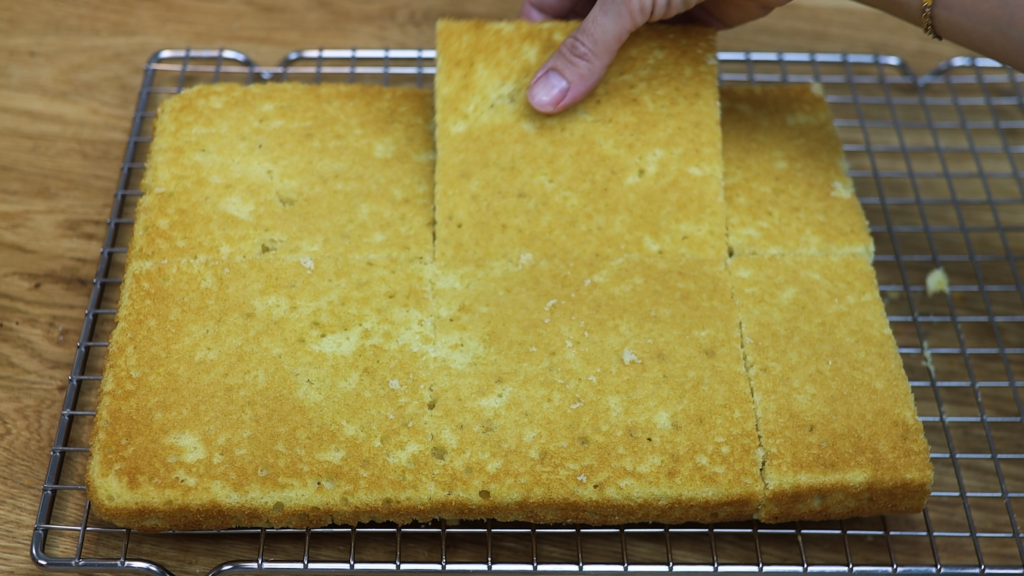
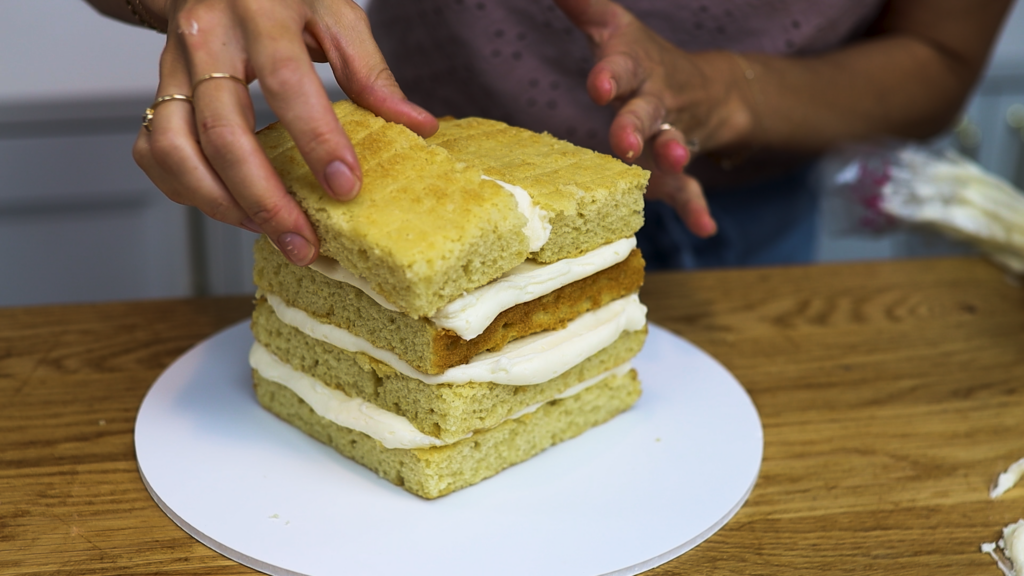
Crumb coat the cake and then chill it for at least an hour.
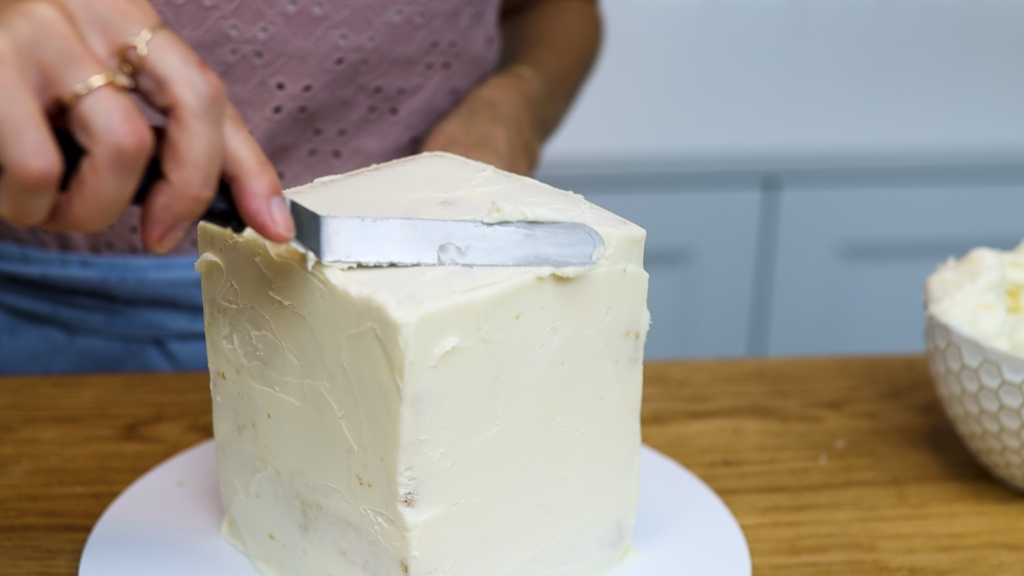
Meanwhile, cut out a square of cardboard that's half an inch bigger than the cake. You can use an Amazon box or any cardboard you have. Next, wrap the cardboard square tightly with parchment paper to make it food safe and non-stick.
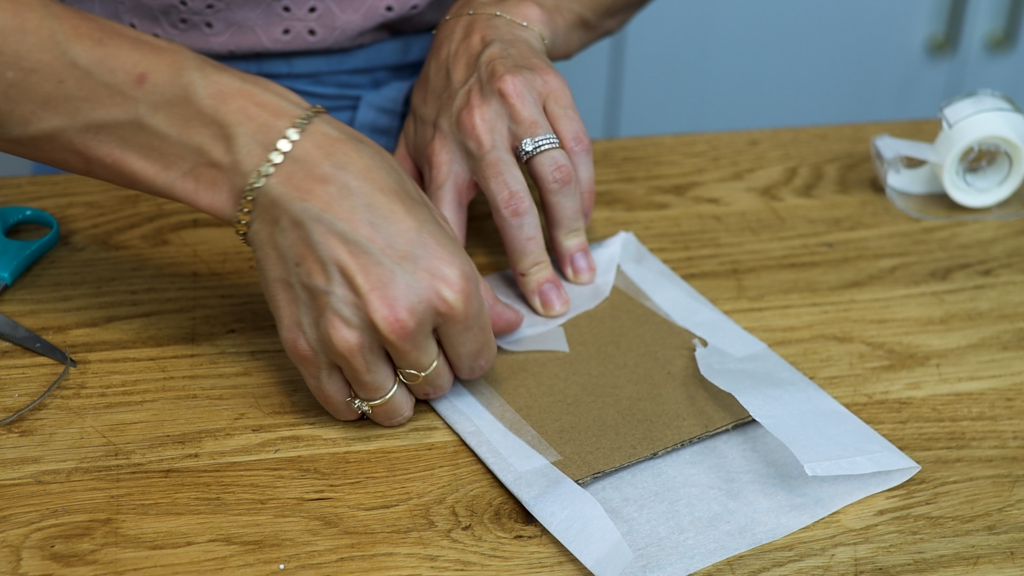
Now spread frosting onto the top of the cake only. Push the wrapped cardboard square down onto it, adjusting it so it's centered on the cake.
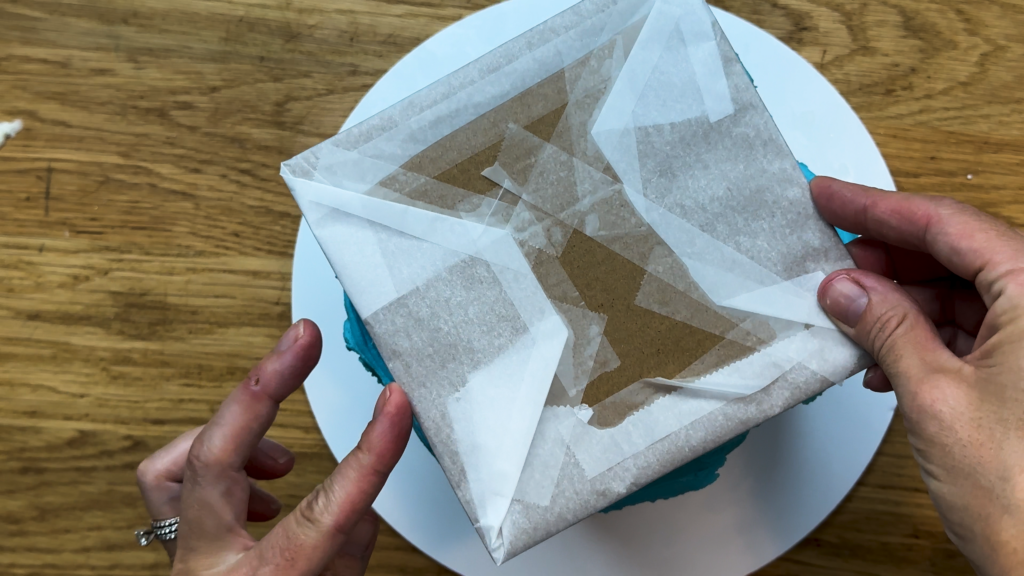
Spread frosting around the sides of the cake so that it's at least as thick as the edges of the cardboard square. By cutting the cardboard square half an inch bigger than the cake you'll have 1/4" of frosting on each side.
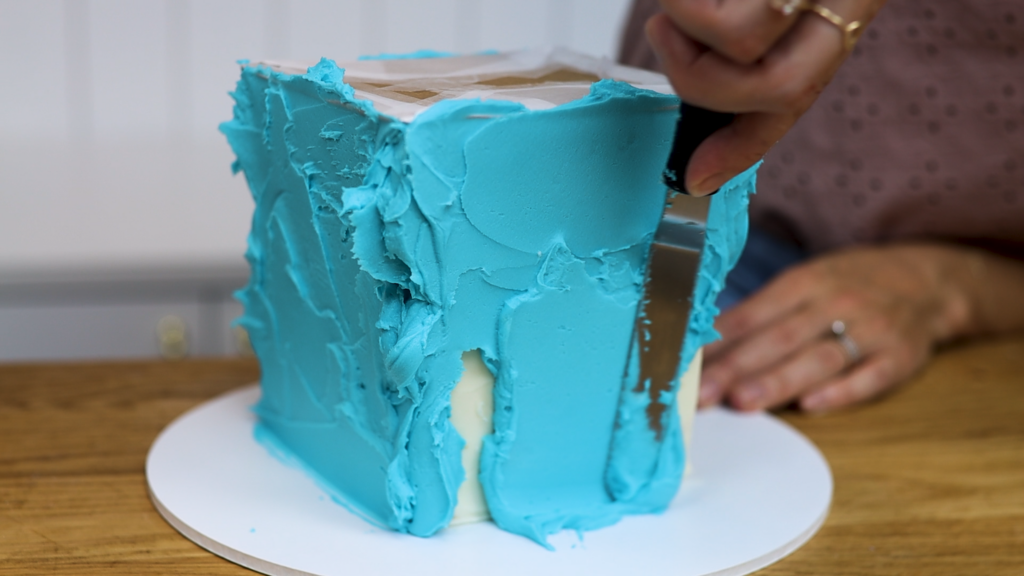
Scrape around the cake with a cake comb to smooth the frosting. Then spread more frosting to fill in any shallow areas and scrape again and again. Try scraping sideways and also upwards, pushing your cake comb against the cardboard to keep it straight.
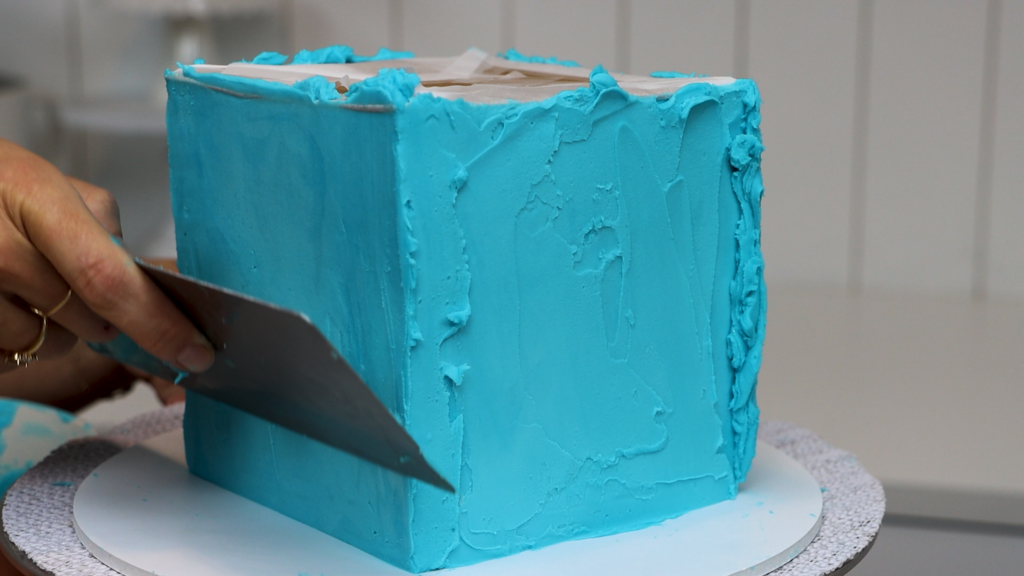
The cardboard square will guide your cake comb to create smooth sides and sharp edges.
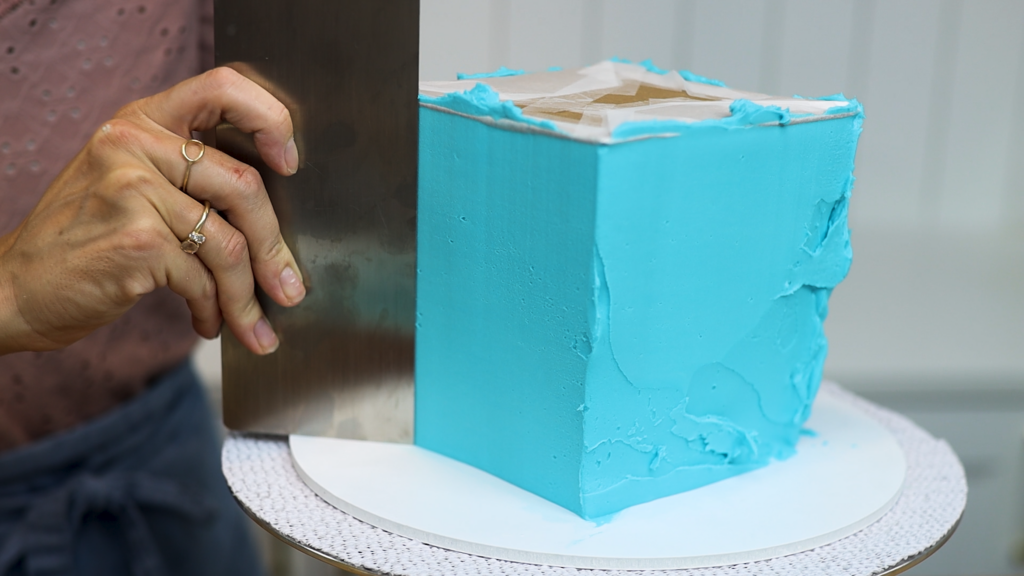
Put the cake in the freezer for 15 minutes or the fridge for 30 minutes before lifting the cardboard square off. To remove it, slice underneath the parchment with a sharp knife.
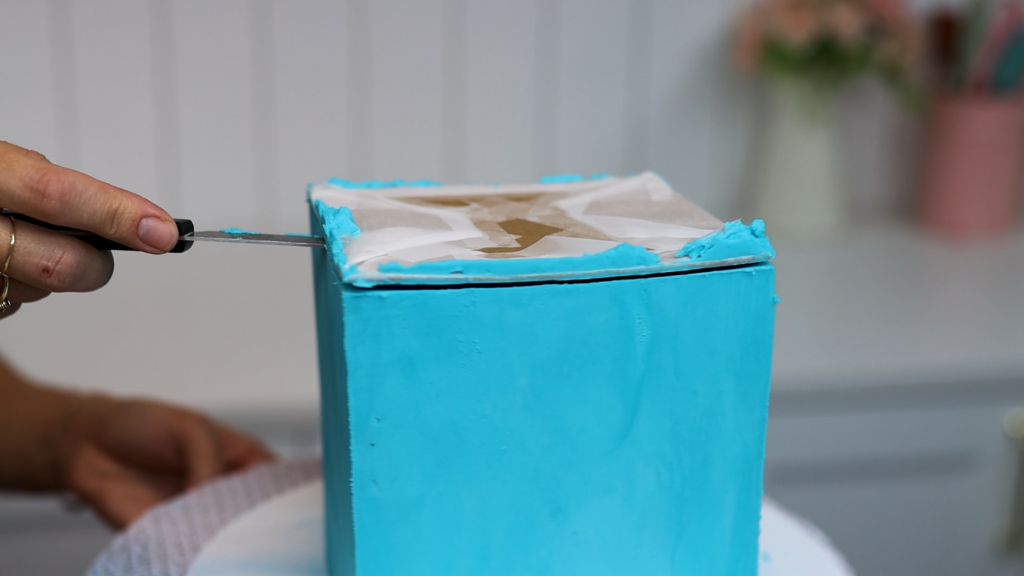
Spread more frosting over the top to fill in any gaps, scrape off the excess and voila!
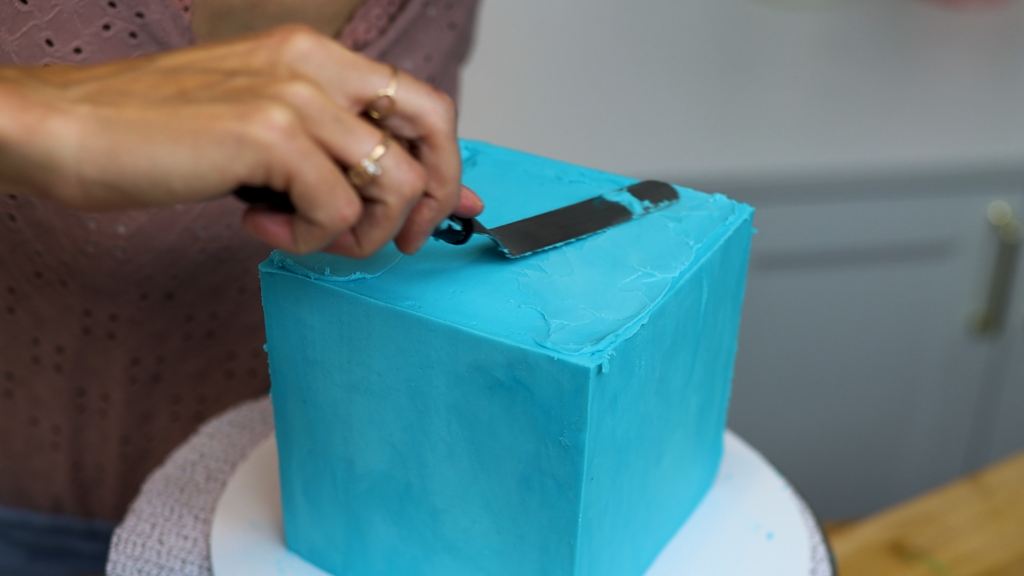
And then of course you can use a sheet cake to make a frosted sheet cake. The trick for this is to use cold cake layers, which will stay firm and keep their position on the cake board. Cold layers will also help you get sharp angles around the corners.
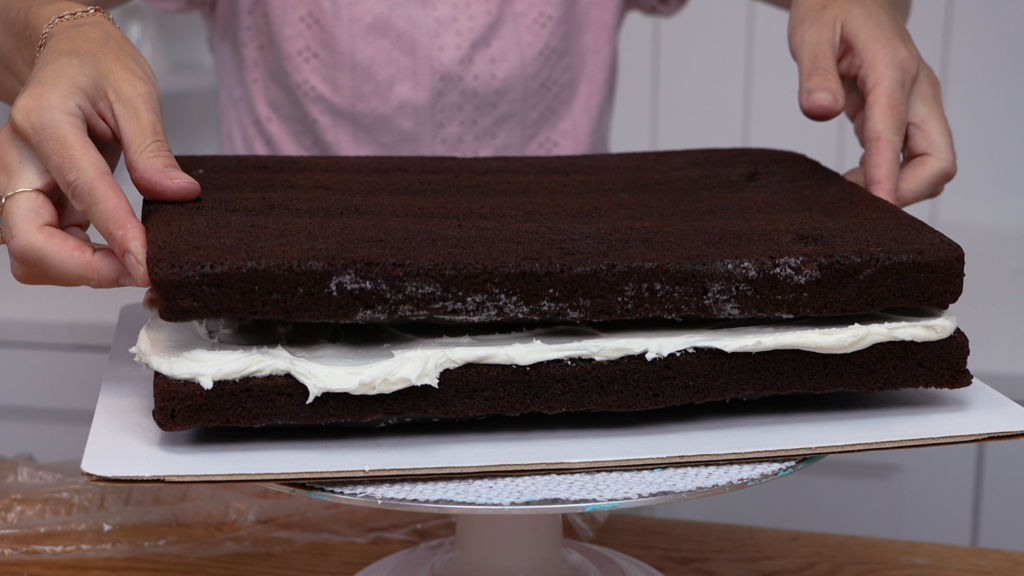
Make the crumb coat as angular as you can since that forms the shape for the final layer of frosting. Push the frosting on top all the way over the edges of the cake and around the sides. Make sure it sticks up above the top edge of the cake, too.
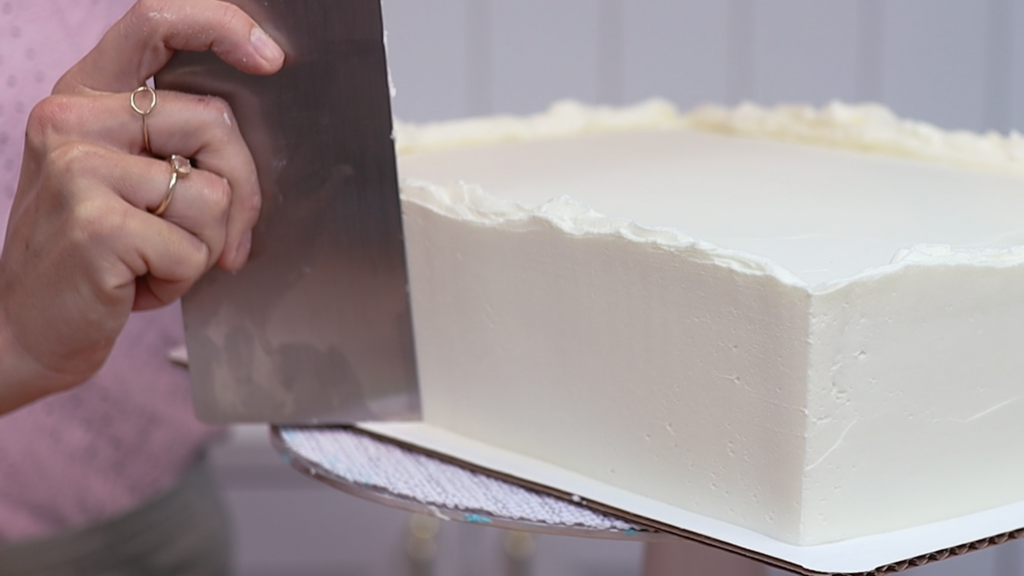
Push the frosting sideways beyond the edges so that you create sharp angles around the corners.
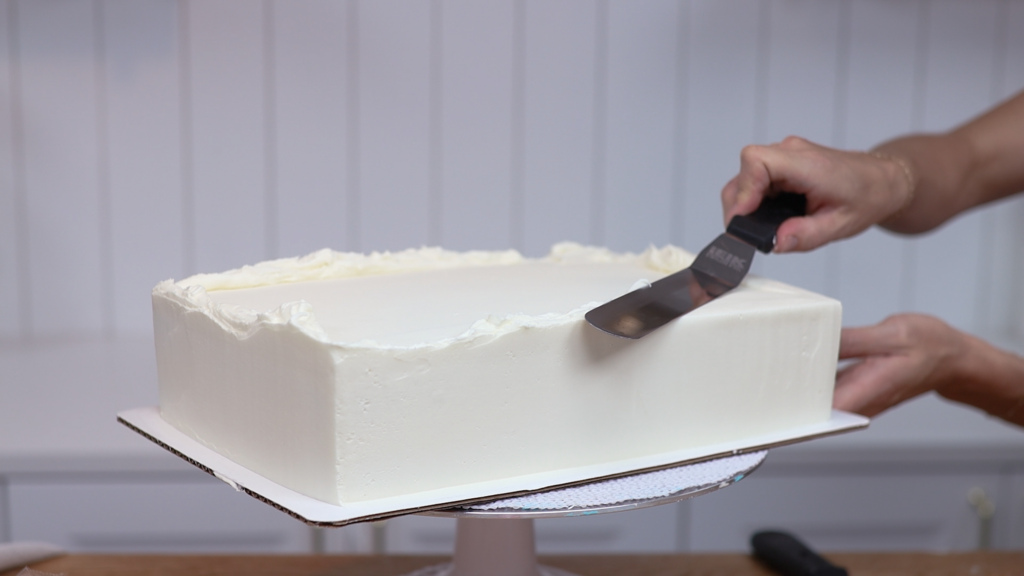
Add a border and then decorate the top for your celebration. These are so easy to serve and a 9x13 inch cake like this can serve 30 people!
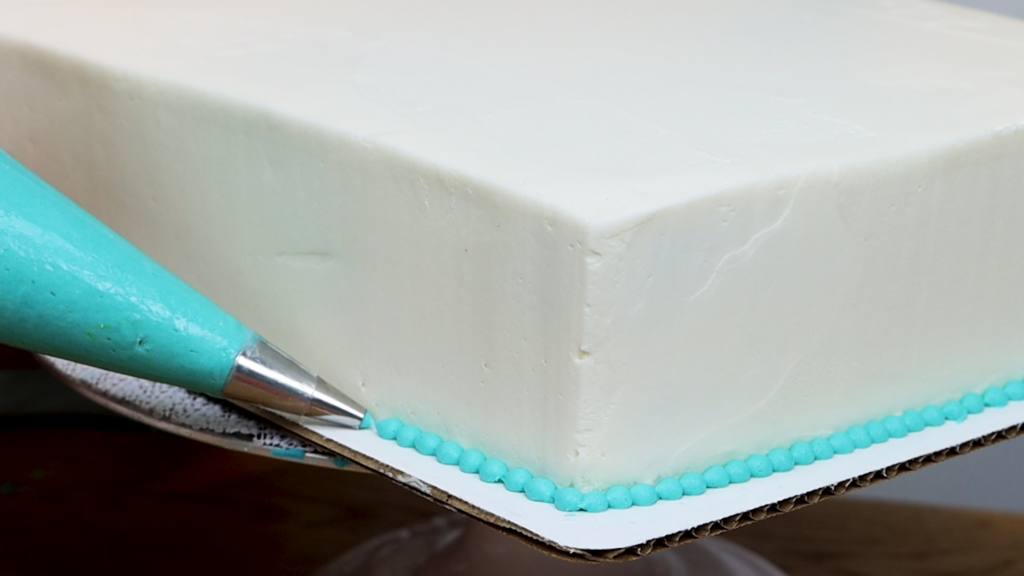
I hope this tutorial has been useful. Visit my cake school to learn more with my online courses on cake decorating!
Watch a video of this tutorial on 6 sheet pan cake transformations:
